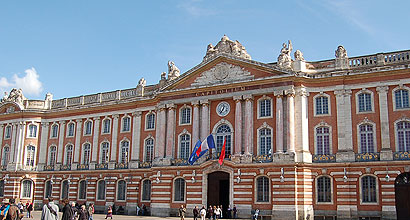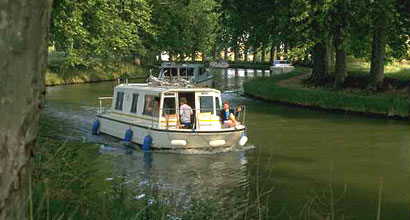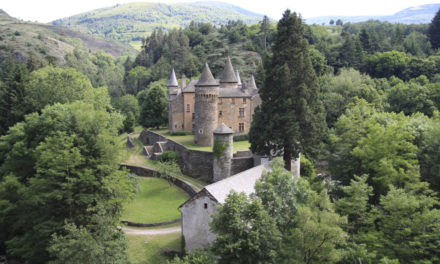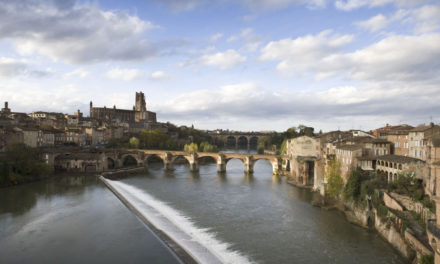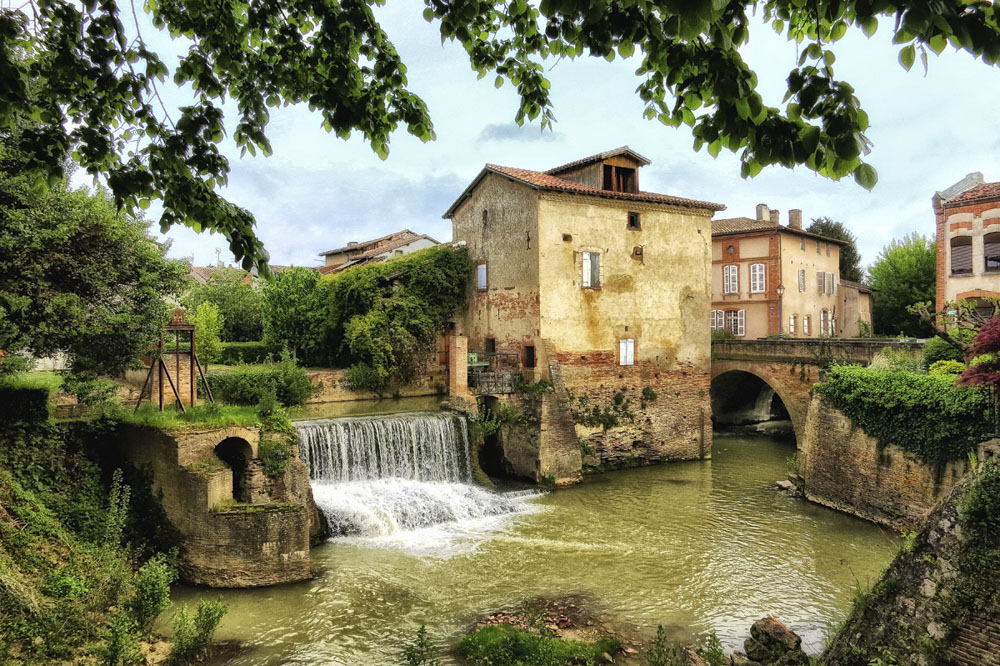
The Gers, with its wide rolling valleys and pretty little hill top villages of honey-coloured houses, some of them built of colombages (wattle and daub) is an agricultural land of plenty. The landscape is of fields of sunflowers and maize, set against the striking backdrop of the snow-capped Pyrenees. Well supplied with lakes and rivers for pleasure boating, fishing and waterskiing, the department is also blessed with being within an easy drive of either the sandy beaches of the Atlantic coast or the ski resorts of the Pyrenees. The River Baise is navigable from Valence sur Baise to Condom and it is now possible to joint the Canal of the Garonne.
Towns in the Gers
Hotels in Gers
Auch
Auch, capital of the Gers, is known for its rich local cuisine and the beautiful gothic cathedral of Sainte Marie dating from 1489 with its carved choir and beautiful stained glass windows. Surveying the general scene in the main square is a statue of the penniless nobleman, Charles de Batz, complete with plumed hat and rapier, on whom Dumas modelled his character of D’Artagnan in The Three Musketeers. It is no surprise with the influence of the Musketeers, that one of the local aperitifs is named ‘Pousse rapière’ (literally the push of the rapier). A liqueur based on orange armagnac, it is served topped up with chilled sparkling white wine and is quite powerful!
Armagnac
Home to Armagnac, the brandy of princes, this is produced within three regions, Higher, Lower and Tenareze. Its origins date back to Gallo Roman times, as illustrated in the mosaics at the superb 14th century roman site at Séviac which was only discovered in the 19th century. It is situated near the pretty arcaded market town of Montréal du Gers. Another interesting drink derived from Armagnac is Floc, a subtle combination of grape juice and Armagnac, usually drunk chilled as an aperitif. The vineyards in the Gers include AOC Madiran, originally used as an altar wine, a full bodied red wine and an ideal accompaniment to duck, game, red meats and cheese. The fruity dry white version is called Pacherenc. To the southwest of the department are the Côtes St Mont, a delicious wine whether red, white or rosé, enjoying renewed popularity thanks to the efforts of the Gers wine producers whilst Côtes des Gascogne is also produced as red, white and rosé.
Foie Gras
In common with so much of the South West, menus tend to feature goose and duck whether as foie gras, confit or magret de canard. The local farming community are fiercely proud of their ‘savoir faire’ and have guarded their recipes for generations. The markets reflect the rich agricultural nature of the department and are full of gleaming vegetables and wonderful fruit as well as all the local patés, foie gras, cheese and saucisses. Recently a newly emerging trend is to hold night markets in July and August so that people can shop in the cooler time of day. As was learnt in the film “Le Bonheur est dans le Pré” shot in the Gers, the ‘rich food’ of the Gascon farmers , the good wine and the armagnac has, contrary to what one might imagine, been found to contribute to what doctors refer to as the ‘French paradox” which is the fact that the Gascons tend to live to a ripe old age. There are also three thermal spas, Barbotan-les-Thermes, Castéra-Verduzan with its casino, sporting complexes, horse races and multi activity country park and the gallo roman town of Lectoure, once the residence of the Counts of Armagnac and the capital of the Lomagne region with its park and lake.
| Title | Address | Description |
|---|---|---|
GERS | Gers, France |

